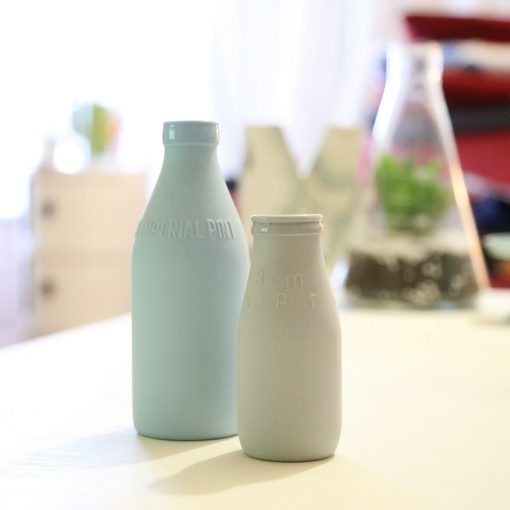The Impact of Technology in a Pandemic
The outbreak of SARS-CoV-2 has deeply affected society throughout the world. The appropriate utilization of information and technology has allowed some countries to fare better than others. Testing and tracking facilitated containment of the virus in South Korea. Widespread use of social distancing and quarantine has enabled a prompt return to life before the virus in New Zealand. Many countries implemented public mask requirements to help stem the spread of the virus. However, not all countries used the technology and resources available to them despite ample advance notice. Technology to prevent and contain public health threats is only useful when society is willing to accept it.
Essential to managing an epidemic is the ability to test and track cases. In South Korea, hundreds of testing sites were set up to provide accessible testing for COVID-19. Deploying rapid diagnostic testing at these sites allowed for prompt diagnosis that facilitated proper treatment of infected individuals, through isolation, contact tracing and hospitalization. The comprehensive testing strategy was a product of being confronted with a previous coronavirus outbreak and learning from the missteps. This included asking for help when needed by utilizing private laboratories to help conduct testing (8).
In contrast, the United States has one lab that could be used for testing at the start of the outbreak: the Centers for Disease Control. Once testing was allowed at state laboratories, only the CDC testing kits were approved for use. Unfortunately, a lack of adequate quality control led to reagents that were contaminated and ineffective. When private labs were finally able to create their own tests, many patients overwhelmed the testing sites. This created a backlog of tests as the virus continued to spread. Long turnaround times delayed diagnosis and treatment, including isolation that could have reduced the number of contacts and infected individual had (6).
In addition to testing, being able to trace the contacts of infected individuals helped to those who needed to be quarantined. This was done through massive data collection authorized by laws passed by the legislature. Credit card usage and cell phone location data were used to determine locations where others may have interacted with the infected person, and this information was released to the public to warn of potential exposures. Those who may have been exposed were expected to isolate for the duration of the incubation period (14 days) which prevented presymptomatic and asymptomatic transmission. The overwhelming support for this program by the people of South Korea enabled them to stave off continued community spread (8).
In America, collection of this type of personal data would be considered an invasion of privacy regardless of the benefits it would confer. Attempts at implementing contact tracing have lacked necessary funding and resources. Less invasive contact tracing requires significant manpower, which in turn requires the ability to train and compensate the contact tracers. Even states that have assembled a team of tracers are finding it difficult to trace contacts since it relies on voluntary participation. Despite advanced warning, the U.S. is struggling to trace contacts (4).
The focus of New Zealand’s efforts to prevent the spread of COVID-19 utilized quarantine. The entire country was put into lockdown, banning all travellers, and shutting down most of the island nation. Schools and business were closed, travel was restricted. While in lockdown, additional steps were taken that would facilitate the success of the phased reopening: contact tracing was implemented via a mobile app and QR codes in businesses. While this method of tracing still relies on voluntary participation, it puts the burden on individuals and encourages personal accountability. By taking the threat seriously, and acting quickly, New Zealand was able to thwart the spread of the island (2).
With a much larger population, and less centralized system of government, the United States would have been unlikely to replicate New Zealand’s success in the best of circumstances. Individual states, and at times individual municipalities, created their own plans for quarantine. Some implemented lockdowns, others issued stay at home orders, and a few states did nothing at all. The inconsistent guidelines and restrictions created confusion among many U.S. citizens about how serious the threat posed by SARS-CoV-2 truly is. There were several protests and demands made by groups to reopen the states despite the benefit to public health of remaining closed. A lack of a unified response to quarantine and reopening has fueled a second wave of cases in America (5).
Another effective means of reducing transmission, and thereby reducing cases of COVID-19, is the use of face masks. In Hong Kong, 97% of people wear masks in public. Culturally, this is seen as protecting both yourself and others. Despite being densely populated and is connected to Wuhan, where the outbreak of SARS-CoV-2 began, the people of Hong Kong managed to stave off the virus. Society collectively came together to make mask wearing expected, provided masks to those who didn’t have access to them, and collaborated on their own public health campaigns. Based on past history, Hong Kong was expected to be hit hard by the current outbreak. The grass roots organization prevented that from happening (7).
Varied guidance on mask wearing in the U.S. had a similar effect to the quarantine efforts. The World Health Organization and Centers for Disease Control original recommendations indicated that masks should be used by healthcare personnel and caretakers of infected individuals. This was later updated to recommend the use of masks in public (3), but confusion over whether masks were necessary took root. As some states and private business have issued requirements for masks to be used, people have expressed outrage over the new rules and are refusing to comply. Public health and social media campaigns encouraging the use of masks have done little to quell the rising tide of discontent (1).
Preventing and containing a public health outbreak requires the successful application of technology and compliance by society. Whether it be lockdowns, contact tracing, testing or widespread use of personal protective equipment, the cooperation of the public is essential. Where some cultures permit the potential infringement on individual rights to serve the greater good, others reject the notion. While the United States has been used as a contrasting example to how these technologies work when implemented properly, it is not alone in its resistance to prevention efforts. In the United Kingdom and other European countries, the same dynamics in America are also being seen. Technology is only as good as the people who utilize it. When used in half measures, or not at all, public health suffers in the face of a viral pandemic. This isn’t the first time that society has failed to take proper action against the outbreak of a virus, and it likely won’t be the last.
References
(1) Aratani, L. (2020 Jun 29). How did face masks become a political issue in America? The Guardian. https://www.theguardian.com/world/2020/jun/29/face-masks-us-politics-coronavirus
(2) Beaubien, J. (2020 May 27). Some countries have brought new cases down to nearly zero. How did they do it? National Public Radio. https://www.npr.org/sections/goatsandsoda/2020/05/23/861577367/messaging-from-leaders-who-have-tamed-their-countrys-coronavirus-outbreaks
(3) Conger, K. (2020 Jun 19). 5 Questions: Stanford scientists on COVID-19 mask guidelines. Stanford Medicine News Center. http://med.stanford.edu/news/all-news/2020/06/stanford-scientists-contribute-to-who-mask-guidelines.html
(4) Cunningham, P.W. (2020 Jun 15). The health 202: U.S. isn’t ready for the contact tracing it needs to stem the coronavirus. The Washington Post. https://www.washingtonpost.com/news/powerpost/paloma/the-health-202/2020/06/15/the-health-202-u-s-isn-t-ready-for-the-contact-tracing-it-needs-to-stem-the-coronavirus/5ee6528b602ff12947e8c0d7/
(5) Shepherd, K. (2020 May 13). Tensions over restrictions spark violence and defiance among protesters as Trump pushes states to reopen. The Washington Post. https://www.washingtonpost.com/nation/2020/05/13/protest-violence-coronavirus/
(6) Stein, R. (2020 Apr 3). Coronavirus testing backlogs continue as laboratories struggle to keep up. National Public Radio. https://www.npr.org/sections/health-shots/2020/04/03/826564948/coronavirus-testing-backlogs-continue-as-laboratories-struggle-to-keep-up-with-d
(7) Tufekci, Z. (2020 May 12). How Hong Kong did it. The Atlantic. https://www.theatlantic.com/technology/archive/2020/05/how-hong-kong-beating-coronavirus/611524/
(8) Zastrow, M. (2020 May 12). How South Korea prevented a coronavirus disaster – and why the battle isn’t over. National Geographic. https://www.nationalgeographic.com/science/2020/05/how-south-korea-prevented-coronavirus-disaster-why-battle-is-not-over/


